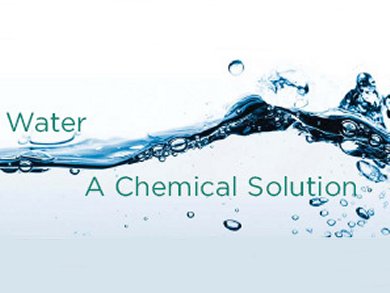Javier García-Martinez, University of Alicante, Spain, the co-chair of the global chemistry experiment “Water: A Chemical Solution”, describes what has become the largest chemistry experiment ever undertaken.
The Global Experiment: Crowdsourcing Water Quality Measurements
More than 10,000 students from over 40 countries have already joined what has been described as “the World´s largest-ever chemistry experiment”. This global experiment, “Water: A Chemical Solution”, explores the chemistry of water and the role of water in society and the environment. The Global Experiment, a joint effort of IUPAC and UNESCO, is a cornerstone activity of the International Year of Chemistry and consists of four component activities.
The activities are focused on the areas of measurement of water quality and water purification:
- pH: Students collect data by measuring the pH of a local water body
- Salinity: Students explore the salinity of their local water body
- Filtration and disinfection: Students learn how chemistry is used to help provide safe drinking water
- Desalination: Students construct a solar still from household materials and experiment with it to purify water
Each activity can be carried out by children of all ages in schools around the world. The activities are adaptable to the skills and interests of students of various ages and use equipment that is widely available. The activities provide students with an appreciation of chemical investigation and data collection and validation.
The results, submitted by thousands of students, are available in a website water.chemistry2011.org, as an interactive global data map — demonstrating the value of international cooperation in science as Erika Dudasova, Science Teacher at the Gymnazium Pavla Horova, Slovakia, notes in the blog on the website. She says, “[The students] were interested in these experiments, as they haven´t done anything like this before. After each experiment, they wanted to compare their results with those from other countries.”

The Big Splash: The Launch of the Global Experiment on the World Water Day
The project was successfully launched on the UN World Water Day, March 20 – 22, in Cape Town, South Africa, after more than a year of dedication from the planning and implementation teams. Hundreds of 15–18 year old students from Cape Town townships carried out experiments to test water quality, measure salinity and acidity, and learn how water is filtered and distilled. During the “Big Splash”, which coincided with the South African National Water Week, students took part in different activities that emphasized the importance of water in their city.
Making the Global Experiment Available to Every School on the Planet
From the very beginning it was clear that if the Global Experiment aimed to be truly global, it must be made available to every school, even to those without the most basic materials. Special school kits were created and adapted experimental protocols have been developed alongside these kits to ensure consistency with the Global Water experiment.
One hundred fifty packs for schools, containing 10 Global Water Kits (GWK) and a School Resource Kit have been sent, for free, to over 30 countries, including Senegal, Mali, Tajikistan, Ghana, The Gambia, West bank, Gaza, Nauru, Burkina Faso, Indonesia, Jordan, Sri Lanka, Saint Lucia, Haiti, Maldives, Grenada, Syria, Lebanon, Bhutan, Democratic Republic of Congo, Madagascar, Armenia, Tanzania, Morocco, Namibia, Oman, Pakistan, Ethiopia, Nigeria, Kenya, Botswana, Malaysia. The kits encourage participation of low-income communities and since one GWK can be used by four to six students at the same time, one pack can cater for a class of 40 – 60 students.

There is also the possibility to purchase the kits, although the activities of the Global Water Experiment are designed to be undertaken with equipment and materials commonly available in a school laboratory. However, if preferred, a kit especially designed for carrying out the activities in the Global Water Experiment can be purchased from the Radmaste Centre at the University of Witwatersrand, South Africa. The kit is supplied as a school resource with the common equipment and materials to perform the experiments and ten individual sets of equipment for student use (which can also be ordered individually).
The Results Are In! Data Collection from Across the Globe
The results, submitted by thousands of students, are collected on the Global Experiment website where they are organized into 2D and 3D maps which give the most comprehensive view of water quality around the world ever collected.

The website also contains state-of-the-art interactive tools, along with pictures, videos and news shared by students and teachers. The activities of the Global Experiment are currently available in 9 languages: English, French, Spanish, Russian, Hebrew, Portuguese, Arabic, Catalan and Chinese.
It is still possible to participate in the experiment. For more information see:
Or register at:
For details of all IYC events and related articles, visit the International Year of Chemistry page
- Information on the impact that the Global Water Experiment
Javier García-Martinez
“Since launching the Global Experiment on World Water Day in March 2011 in South Africa, 128,330 students and 2354 teachers (as of 1 April 2012) from over 80 countries have shared their results on the website. However, the actual number of people who have taken part in the Global Experiment is much higher, since not all have shared their results online. In Brazil for example, it is estimated that more than 1.5 million students participated in this activity; support by the Brazilian government was instrumental in providing 30,000 kits for schools to participate.
Similarly, in the United Kingdom where the Royal Society of Chemistry organized the Global Experiment Day on 22 June 2011, thousands of students participated in this activity.We may never know the exact number of students who participated, but the most important thing is that that through the Global Experiment thousands of young people around the world have discovered an interest in science and enjoyed doing simple experiments while learning about chemistry and water”
- Link to the interactive map with all the data collected
This article is available in the Czech language (provided by Alex Skollen from Autip.com).


